A shocking new study from Israel compares the protection offered by vaccine-induced immunity versus natural immunity from a previous COVID-19 infection and finds the latter offers far more robust protection from infection, symptomatic disease, and hospitalization.
Natural immunity confers much longer lasting protection
Directly comparing 16,215 previously COVID-19 infected individuals to 16,215 fully vaccinated individuals, 10 physicians (Gazit et al., 2021) preliminarily report (pre-print) fully vaccinated people are (a) 13 times more likely to be infected with COVID-19, (b) 27 times more likely to be symptomatically infected, and (c) 8 times more likely to be hospitalized than unvaccinated people with a prior COVID infection (natural immunity).
“This study demonstrated that natural immunity confers longer lasting and stronger protection against infection, symptomatic disease and hospitalization caused by the Delta variant of SARS-CoV-2, compared to the BNT162b2 two-dose vaccine-induced immunity.”
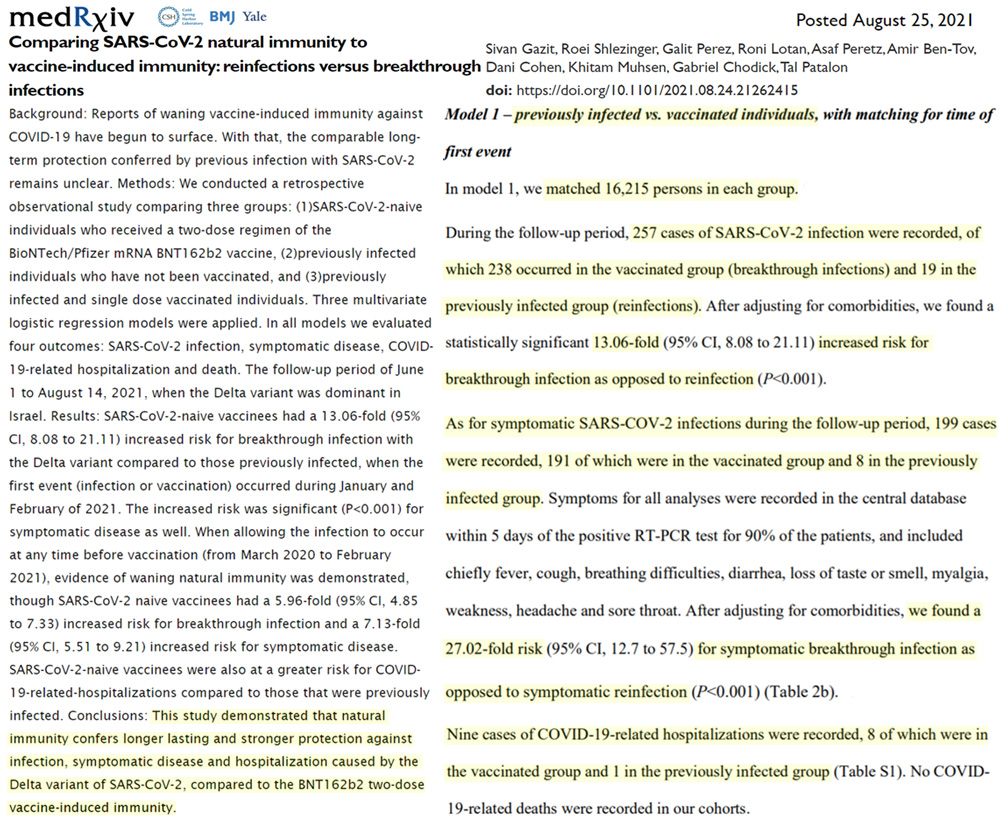
Image Source: Gazit et al., 2021
Other studies (Dan et al., 2021, Turner et al., 2021) have also indicated natural immunity obtained from a prior infection affords long-lasting, even “lifetime” anti-body protection from re-infection.
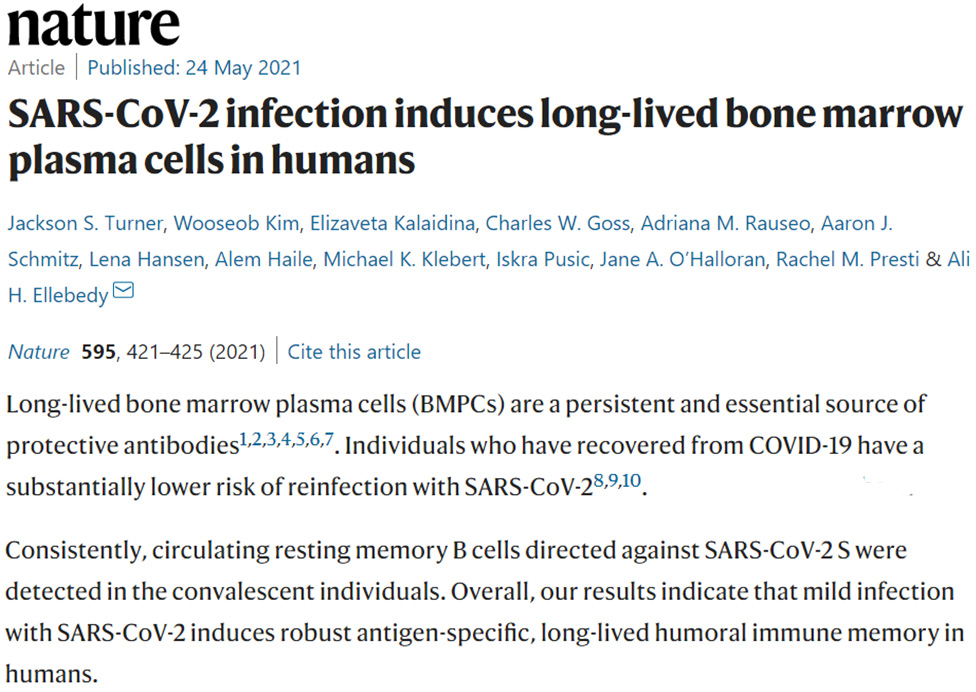
Image Source: Turner et al., 2021

Image Source: Washington University press release for Turner et al., 2021
Vaccine effectiveness declines 56% within just 70 days
A new study published in The Lancet reports an initial surge of antibody protection for those who have received the second dose of the Pfizer vaccine.
Unfortunately, within weeks after the last shot, vaccine effectiveness begins to dramatically decline. In just 2½ months, already the vaccine has lost 56% of its antibody levels.
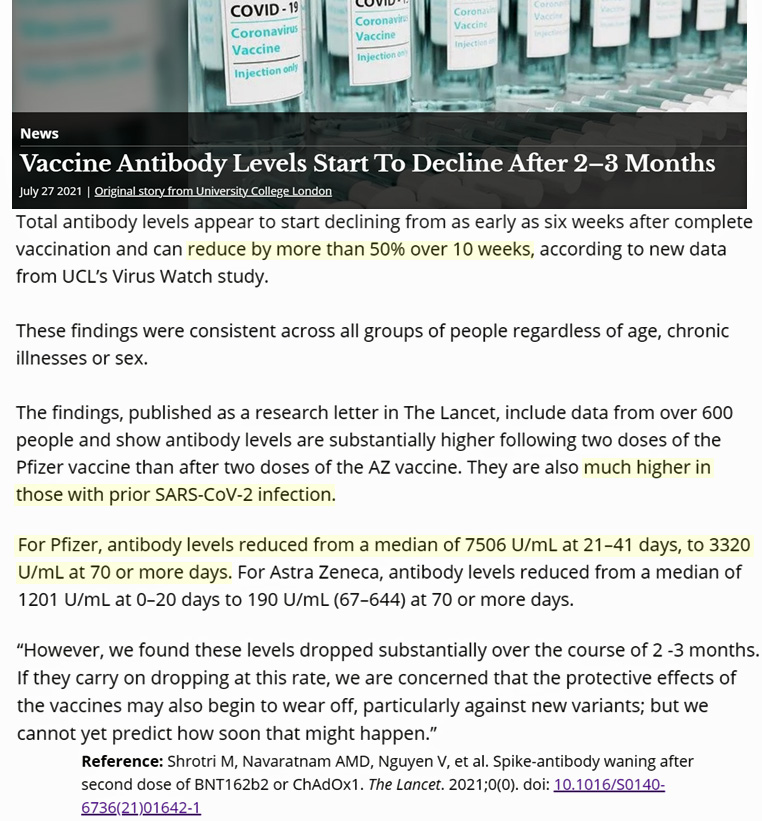
Image Source: press release for Shrotri et al., 2021
An “exponential decrease” in vaccine effectiveness of up to 40% per month after last shot
Another new study highlights the precipitous drop in antibody protection almost immediately following getting jabbed for the second time.
While those with natural immunity from a prior COVID-19 infection (convalescents) lose <5% antibody protection per month after a COVID-19 infection, vaccinated-only individuals lose up to 40% of their immunity protection every month after their last shot.
At this pace, the artificial immunity afforded by vaccines wears off within a few months.
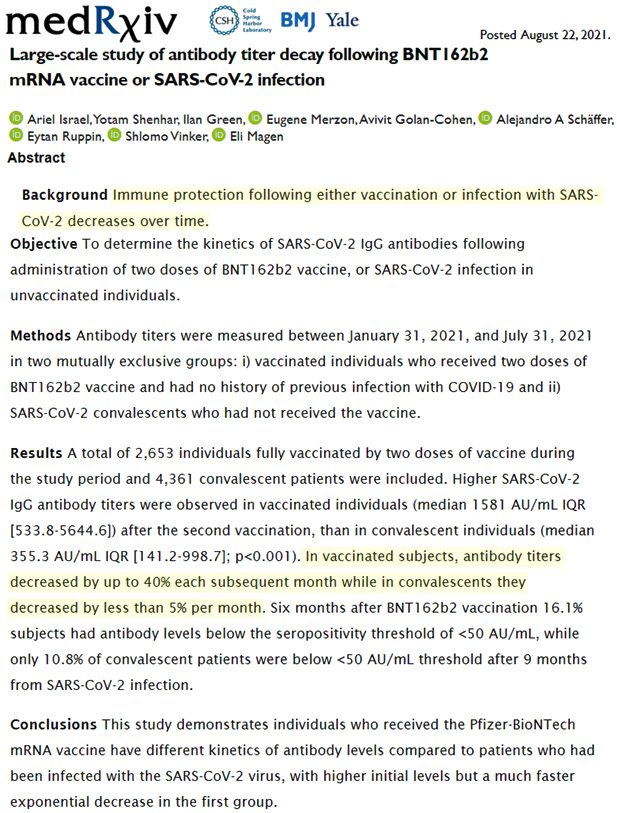
Image Source: Israel et al., 2021
Catch-22?
If strong and lasting protection from symptomatic disease, hospitalization, and death favors natural infection with COVID-19 over vaccination, then an understandable, “Catch-22” objection would be that it is still worse to be infected with COVID-19 than injected with the various immunizing vaccines available.
So here is the larger context worth considering.
Underestimating the prevalence of COVID-19 infections vastly overestimates the fatality rate
Throughout 2020 several studies emerged assessing the actual prevalence COVID-19 infections in communities from antibody tests rather than just relying upon the number of confirmed cases. Because up to 96% of individuals contracting COVID-19 may have no symptoms, it is quite common for those infected with COVID-19 to not even know it. Therefore the prevalence – or number of individuals who have actually had COVID – has been assessed to be substantially higher in communities than when only using the number of confirmed cases suggests.
In Santa Clara, California, for example, the prevalence of COVID was assessed to be ~53,000 cases when extrapolating the assessed number of people with COVID-19 antibodies (seroprevalence). Instead of ~53,000, the number of confirmed cases in Santa Clara at the time of the study was 948, which is “56-fold lower than the number of infections predicted by this study” (Bendavid et al., 2021).
Another study (Doi et al., 2021) suggested the prevalence was “396 to 858-fold more than confirmed cases with PCR testing.”
With a much higher prevalence comes a much lower number of deaths per infection, or infection fatality rate (IFR).
“In conclusion, our findings imply that ≈518,000 persons in Guilan Province may have been infected with SARS-COV-2 as of April 19, 2020, which is substantially higher than the 1,600 cumulative confirmed cases recorded. As of May 3, if we assume a 3-week lag from time of infection to death, 625 persons had died of confirmed COVID-19 in Guilan Province. This number would correspond to an infection-fatality rate of 0.12%” [Shakiba et al., 2020].
The global infection fatality rate for COVID-19 is 0.23%
According to a highly-cited synthesis of 61 studies from 51 locations across the globe using antibody (seroprevalence) data (Ioannidis, 2021), the median infection fatality rate (IFR) for COVID-19 (without vaccine intervention) has been determined to be 0.23% for all ages, and 0.05% (1 in 2000) for individuals under 70 years old.
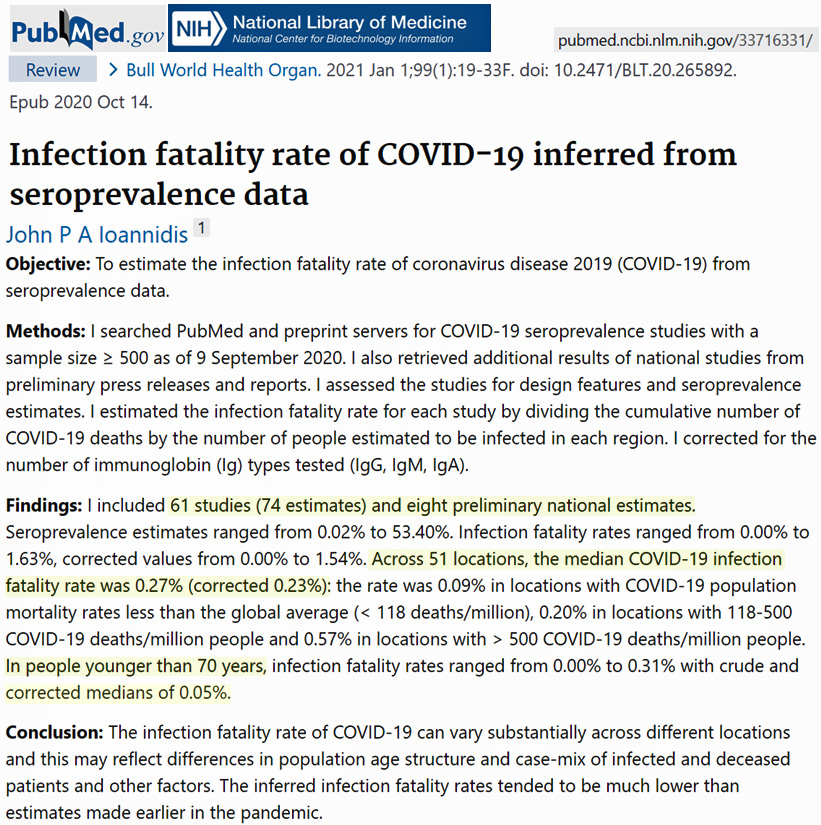
Image Source: Ioannidis, 2021
The IFR for seasonal to pandemic flu, 0.1% to 0.67%, is similar to COVID-19 IFR
COVID-19’s 0.23% infection fatality rate is in the middle of the range of IFR estimates for seasonal (~0.1%) to “pandemic” influenza (i.e., 0.67% for the 1957-’58 “Asian flu” pandemic).
Dr. Anthony Fauci and Dr. Robert Redfield, CDC Director (US), published a NEJM paper in late February correctly predicting “the overall clinical consequences of Covid-19 may ultimately be more akin to those of a severe seasonal influenza (which has a case fatality rate of approximately 0.1%) or a pandemic influenza (similar to those in 1957 and 1968)”.
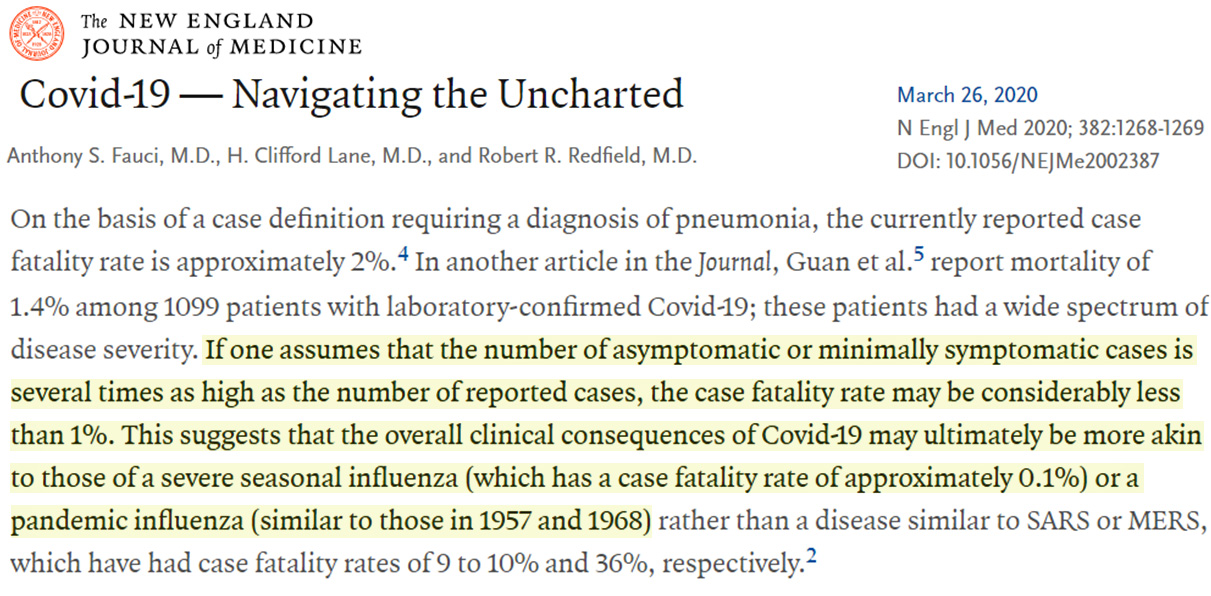
Image Source: Fauci et al., 2020
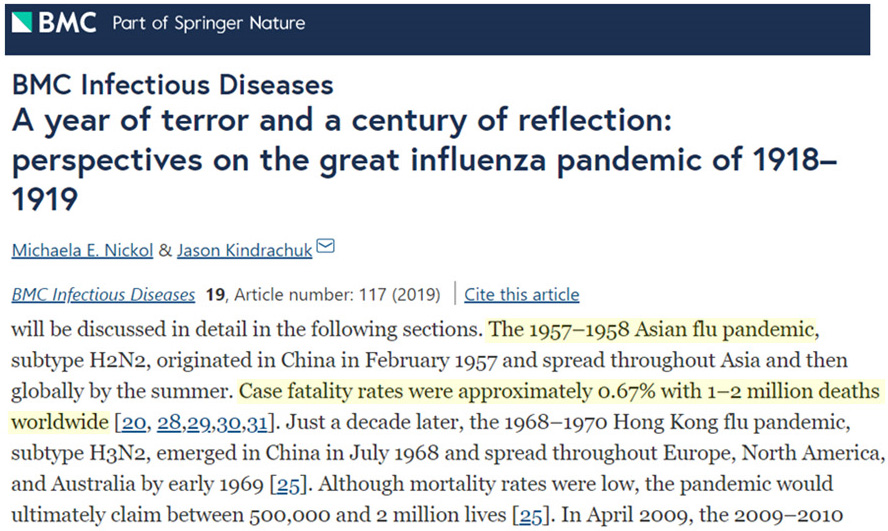
Image Source: Nickol and Kindrachuk, 2019
Studies: vaccines may actually be enhancing, not neutralizing, COVID variants and spread
Disturbing trends from across the globe, especially in highly-vaccinated countries like Israel, Iceland, and the UK, suggest new cases, hospitalizations, and deaths among the fully vaccinated have been rising dramatically since about mid-July. The “pandemic of the vaccinated” phenomenon has just recently (August) begun making its way into the United States.
Within the last week, two more studies (Liu et al., 2021, Yahi et al., 2021) suggest the more recent variants (Delta) are resisting vaccine neutralization. Worse, current vaccines may not reduce, but they may even enhance COVID’s Delta variant’s infectivity by spawning more resistant mutations.
“[T]he emergence of SARS-CoV-2 variants may tip the scales in favor of infection enhancement. Our structural and modeling data suggest that it might be indeed the case for Delta variants” [Yahi et al., 2021].
Furthermore, “boosters,” or third shots, may actually “boost enhancing anti-bodies” more than neutralizing antibodies (Liu et al., 2021).
In other words, vaccines may be worsening the current COVID surge.
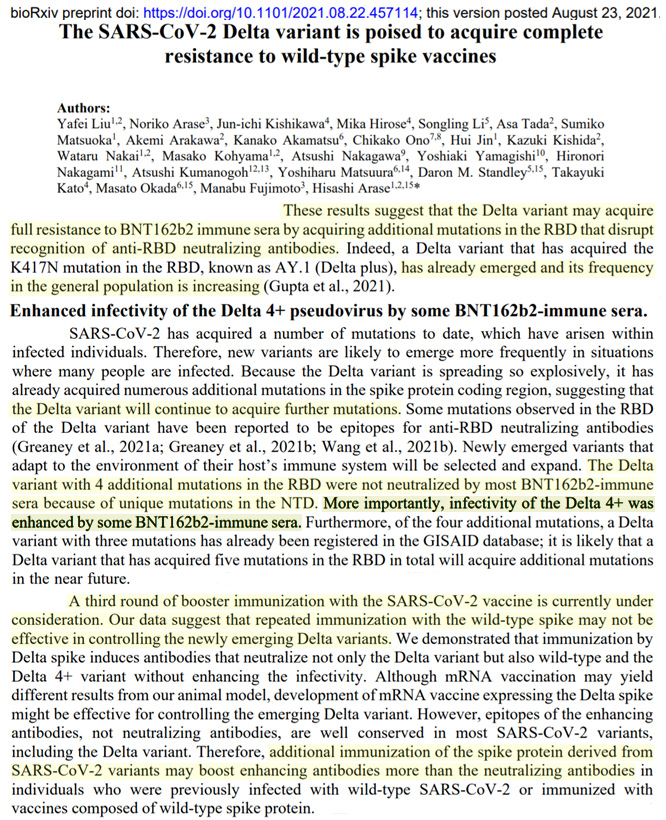
Image Source: Liu et al., 2021
“85-90% of the hospitalizations are in fully vaccinated people”
In late July Israeli Minister of Health data suggested the vaccines’ effectiveness has fallen from the advertised >90% to 39%. It may be even lower now.
Here are some recent headlines from across the globe documenting the burgeoning pandemic of the fully vaccinated.
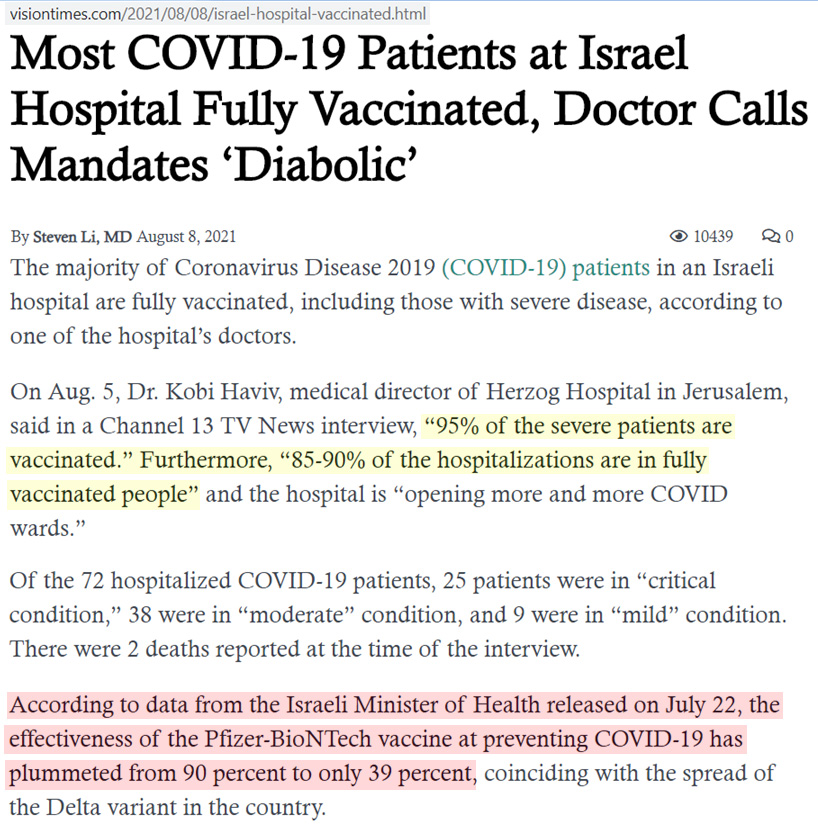
Image Source: VISIONTIMES.com
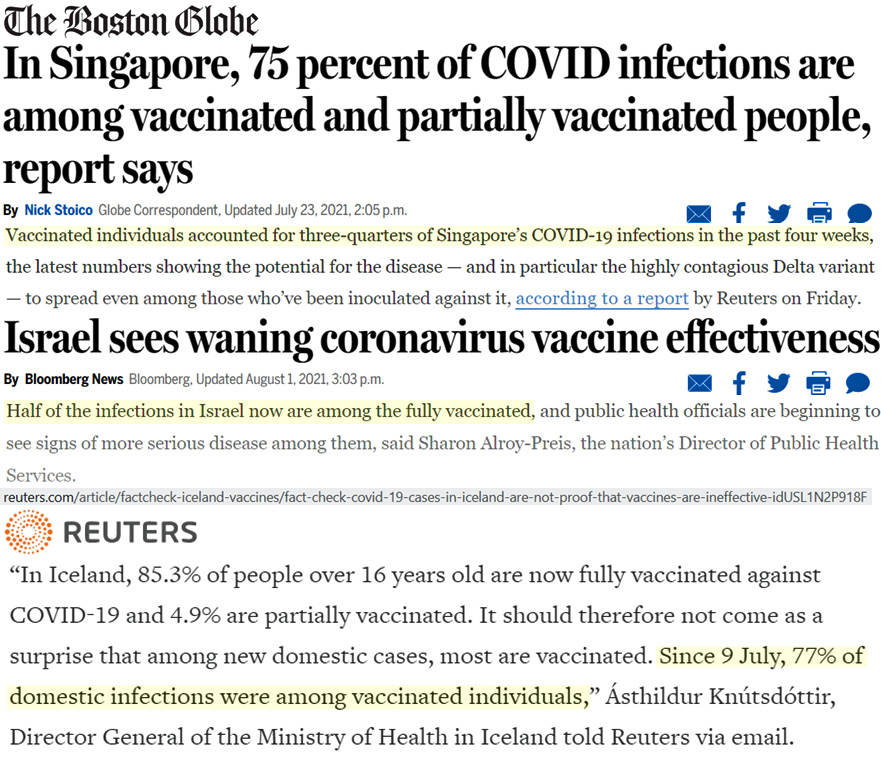
Image Sources: Boston Globe, Boston Globe, Reuters
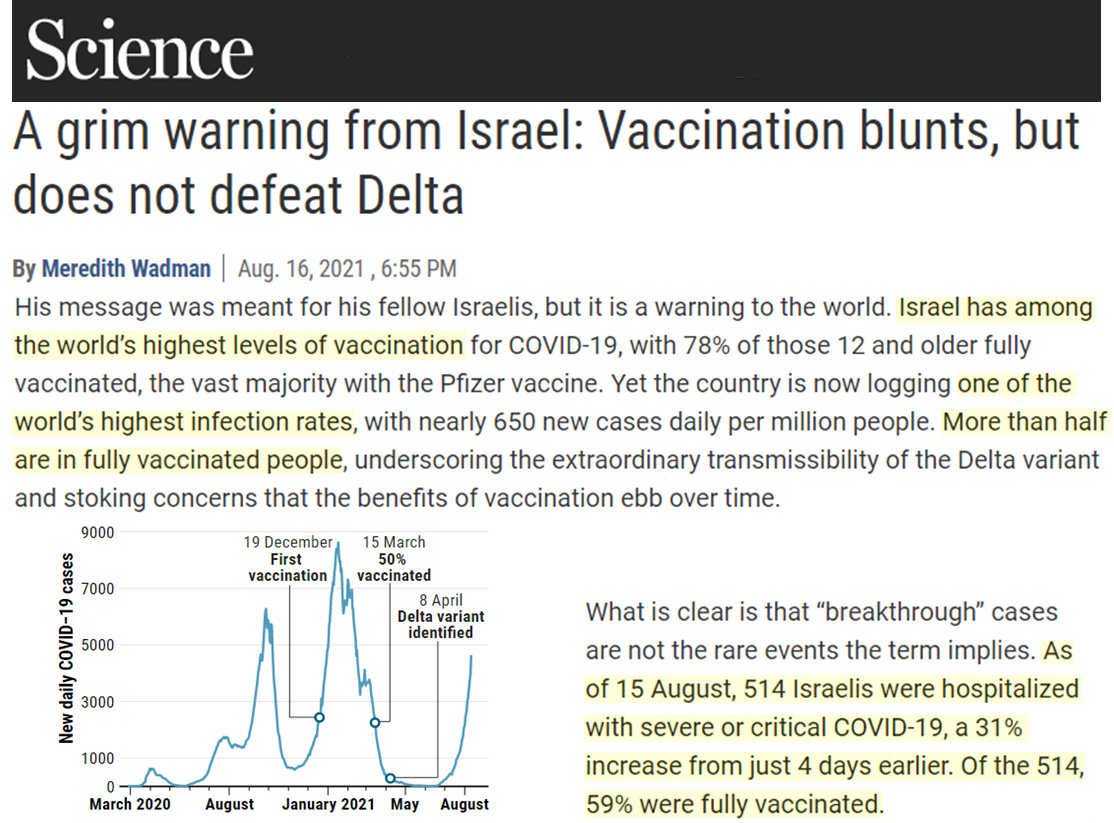
Image Source: Wadman, 2021
The pandemic of the fully vaccinated has just recently begun permeating the United States. The percentage of new COVID cases and deaths represented by the fully vaccinated used to be in the low single digits in June and into July. In the last few weeks, however, in the USA’s most vaccinated states (Oregon, Vermont, Massachusetts), 20-40% of new cases and deaths are fully vaccinated individuals.
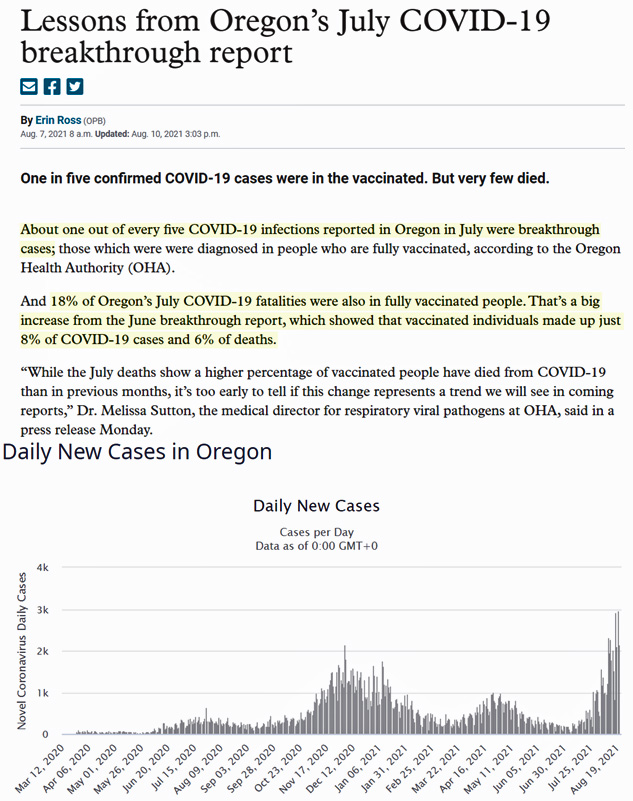
Image Source: OPB.org and worldofmeters.info
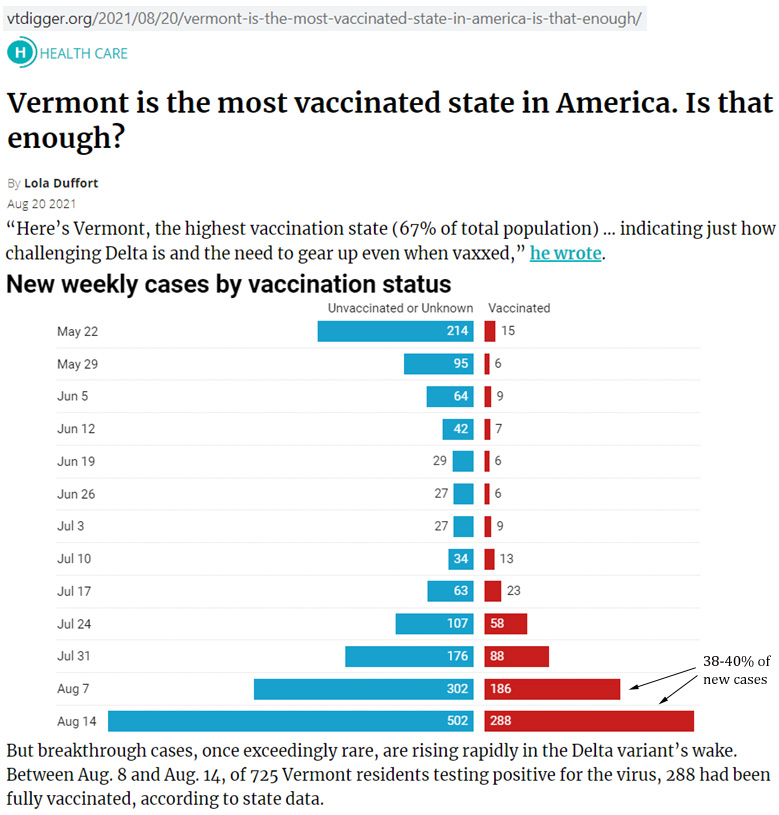
Image Source: vtdigger.org

Image Source: NBCBoston.com
via NoTricksZone
August 26, 2021 at 11:27AM

Reblogged this on The Social Critic and commented:
The science is settled: Recovery from a prior COVID-19 infection confers durable immunity as compared to vaccine-acquired immunity. Notably, internal CDC guidelines following the Biden administration’s recent vaccine mandate acknowledges naturally-acquired immunity as a valid reason for an exemption. By contrast, most of the American workforce impacted by President Biden’s vaccine mandate will not be eligible for an exemption based on natural immunity. And that begs a question: Why are federal health regulatory agencies permitted to “follow the science” whereas Americans who do not work for a federal public health agency are at risk of losing jobs, scholarships and potentially even the ability to continue to feed and shelter themselves if they fail to comply with vaccine mandates that do not account for COVID-19 status? Why is this important? Because injecting a person with a vaccine shortly after they have been ill with a virus for which a particular vaccine is given creates a health risk known as “hyperimmune response”. For this reason, CDC does not recommend that those recently infected with COVID-19 vaccinate. The problem with the president’s vaccine mandate is that it also fails to account for those who are ineligible to vaccinate because they have had COVID-19 within the past 90 days. In summary, not only is it unnecessary to vaccinate those who have recovered from a recent COVID-19 infection, it may even be dangerous. If science — not fear — is guiding the Biden administration decisions, the president must rectify the fact that one-size-fits-all mandates are inappropriate for everyone and potentially unsafe for some.
LikeLike
I completely believe active/acquired immunity is superior. But that’s not the only comp other! Look at naive (non vacc, non exposed) vs vaccinated as well …
LikeLike